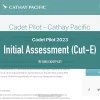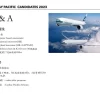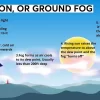I originally didn’t plan on writing this article,
but due to the increasing number of private messages I’ve received from family members recently,
I think it’s better to write a comprehensive response for all of you.
As a newcomer, my knowledge is limited, so I welcome guidance and exchange of information.
Due to space limitations, I won’t go into too much detail.
Key points ❗️ First, you need to have the right to work in the U.S.
1️⃣ Work visa: (Not all H1B visas allow for this, as some regional airlines like Skywest may offer a one-year OPT).
2️⃣ Permanent residency (I am not an immigration consultant, so I cannot provide advice on this).
3️⃣ U.S. citizenship.
Part 121:
Except for regional airlines that hire direct entry captains,
(this requires a minimum of 1000 hours of FAA 121 operation, and FAA 135 hours can be credited towards the 1000-hour requirement
(Note: FAA 121 time refers to aircraft with registration numbers starting with “N”).
If you have enough hours, you can directly take the captain’s exam and become a captain.
Regarding the signing fees for direct entry captains in regional airlines that you may have seen, ranging from $175,000 to $200,000,
the amount and duration of payment, as well as whether it will be refunded if you leave, are all specified in the contract. Co-pilots also receive signing fees.
(Except for one regional airline under the Teamster union that doesn’t refund the money when pilots leave, other regional airlines under ALPA generally refund the money).
Most major airlines and cargo airlines only offer co-pilot positions.
This means that even if you were a captain before, you can only start as a co-pilot.
Don’t worry about things like serving tea or pleasing the captain based on appearance, as it doesn’t exist here.
The working environment is not as bureaucratic as in China, and it is friendly and equal.
The typical Western culture encourages cooperation rather than competitive rewards and punishments.
The captains I have encountered (including those from other airlines) have all been very kind,
and most of them end up calling me “Boss/Bro” by the end of the flight. (I’ve made them call me that by joking around in the cockpit).
Even the older generation of retired air force pilots who served in Taiwan in the past,
after knowing that I am from mainland China, have had conversations without any bias, political opinions, or preconceptions.
Instead, they were more curious about the progress China has made today.
If you really encounter a captain you don’t like, you can simply block them in the system, and you won’t have to fly with them again.
(Co-pilots can block captains, but captains cannot block co-pilots,
and most airlines’ systems support this feature).
To the main point: After Obama signed the bill,
it became a requirement for co-pilots in Part 121 to hold an FAA ATP (Airline Transport Pilot) license to be hired.
The minimum flight hours are 1500, with additional requirements for specific types of flight hours, and so on.
At this point, I envy my Chinese students who were able to start working with a CPL (Commercial Pilot License) and 250 flight hours.
To convert your license,
get a confirmation letter and accumulate 1500 hours to go for ATPCTP-ATM-ATP.
Tips: If money is not an issue, you can consider getting a Type Rating.
When you do your type rating, you can also obtain ATP if you don’t already have it.
If you want to take the ATP checkride with a small twin-engine aircraft, you can, but it doesn’t hold much significance.
If you have previously received training in the U.S., you are the luckiest.
Your private pilot license is already in the FAA system, so you don’t need a confirmation letter.
You can write or print your logbook, and it doesn’t matter if it’s stamped or not.
For other countries, refer to the FAA official website for specific details on license conversion.
For EASA licenses, remember to check if they have expiration dates.
For CASA licenses, the license itself doesn’t expire, but make sure to check the validity of your Instrument Proficiency Check (IPC).
If there are any specific areas you would like me to elaborate on, please feel free to leave a comment.
Translate of XHS@Pilot SweetPotato🍠
-> prepare for computer test (CUT-E): https://pilotassessments.com/pilot/cadet/




